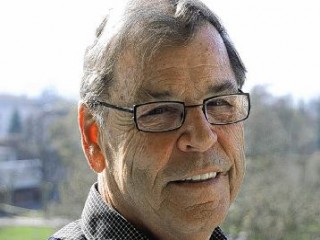
Franz Dischinger biography
Date of birth : 1887-10-08
Date of death : 1953-01-09
Birthplace : Heidelberg, Baden-Württemberg, Germany
Nationality : German
Category : Arhitecture and Engineering
Last modified : 2011-07-04
Credited as : Civil engineer, structural engineer, Dyckerhoff & Widmann AG
0 votes so far
Franz made his studies at the Technical School (TH) in Karlsruhe. In 1913 began his work at Dyckerhoff & Widmann.
In 1922, he designed the Zeiss Planetarium in Jena with Walther Bauersfeld, using a thin-shell concrete roof in the shape of a hemisphere. Their system was subsequently patented, and Dischinger published a paper on the relevant mathematics in 1928.
Since the previous stay and cable bridges in Dischinger's opinion were both flawed technically and disturbing looking, he decided to publish his own cable stayed bridge. This design has been used ever since, more than 100 of these cable stayed bridges have been built.
For the 1938 design of a rail suspension bridge (not built), he had studied historical bridges incorporating inclined stay elements, such as those by Ferdinand Arnodin and John Roebling. He went on to design the 183 m span Strömsund Bridge in Sweden, completed in 1955 and generally considered the first of the modern tradition of cable-stayed bridges, although there had been many isolated examples of the bridge form before then. This employed a steel deck and cables, with large spacings between the stays typical of the early designs. It appears in Strömsund's coat of arms.
Accredited to :
Strömsund Bridge (1955)
Designer :
Adolf Hitler Bridge (1934)
Alsleben Bridge (1927)
Weingut I Aircraft Factory (1945)
Engineer :
Great Market Hall (1928)
Grossmarkthalle (1940)
Großmarkthalle Basel (1929)
Leipzig Market Hall (1929)
Zeiss Planetarium (1926)
















